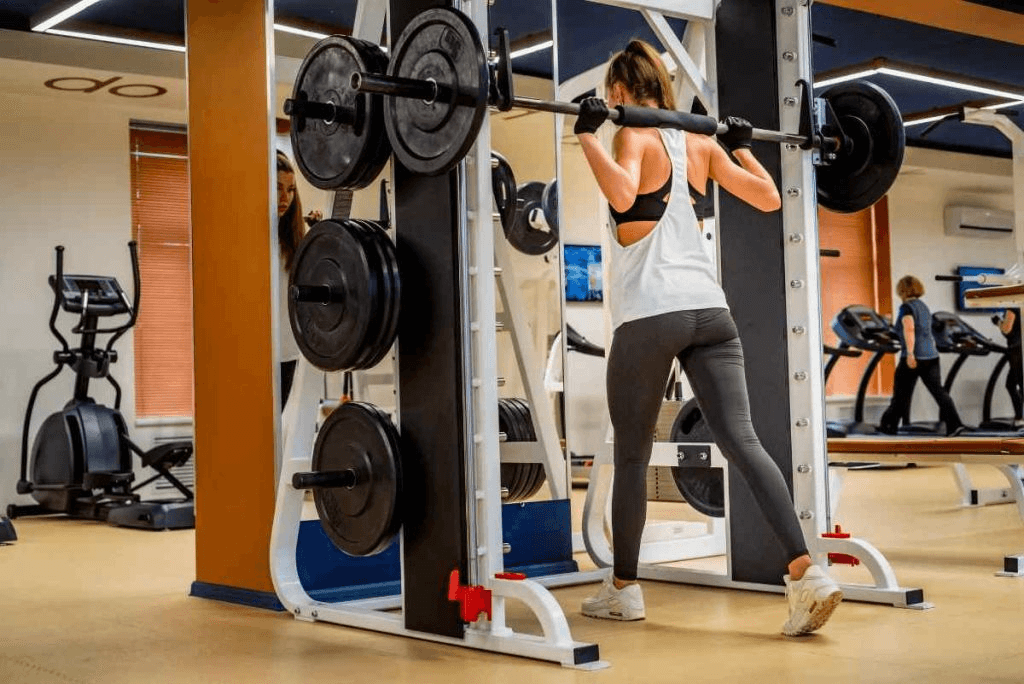Setting up a home gym comes with a lot of decisions—one of the most overlooked is whether you need a mat for your squat rack. Whether you're a beginner or a seasoned lifter, choosing the right squat floor mat can dramatically improve the safety, longevity, and comfort of your training environment. Let’s break down why a squat rack floor mat isn’t just an accessory but a foundation for a better workout.
Why Use a Mat for Squat Rack?
A squat rack floor mat does more than just make your space look tidy. It plays a crucial role in:
-
Protecting Your Floor: Even standard flooring can crack or dent under the load of heavy weights. A good mat absorbs impact, preventing damage to concrete, hardwood, or tile floors.
-
Noise Reduction: Dropping weights or racking a barbell can create an echoing sound, especially in garages or basements. A squat mat helps to deaden the noise, making your workouts more pleasant for you—and your neighbors.
-
Improved Safety: High-density mats create a stable and non-slip surface. This reduces the risk of slipping when squatting or moving around your rack, especially if your training area tends to get dusty or slick.
-
Extending Equipment Life: Constant contact with rough surfaces can scratch or wear down your squat rack feet and weight plates. A quality mat cushions the contact, helping your equipment stay in better condition over time.
Choosing the Best Squat Floor Mat
Not all squat mats are created equal. Here are some points to consider:
-
Thickness Matters: Thicker mats (3/4” to 1”) are ideal for heavy lifting, offering better shock absorption. Thinner mats (1/4” to 1/2”) might suffice for lighter setups.
-
Material: Rubber is the gold standard, especially recycled rubber which combines durability with eco-friendliness. High-density EVA foam can be used for lighter equipment, but it tends to compress over time under heavy loads.
-
Size and Coverage: Ideally, your squat rack floor mat should cover not just the rack itself but also the area where you step out for lifts. This provides full protection for both you and your floor during squats, lunges, and accessory work.
Personal Experience with Squat Rack Mats
When I first set up my home gym, I underestimated how much difference a simple mat would make. I started without one, and within weeks my garage floor had noticeable scuff marks from deadlifts and squats. Even worse, I found my footing wasn’t as stable as I’d like during heavier lifts. After investing in a commercial-grade rubber mat specifically designed for squat racks, the change was immediate. My lifts felt safer, cleaner, and the space looked far more professional. Years later, the mat still holds up, and my floor remains intact.
Squat Rack Floor Mat Options: What's Right for You?
-
Dedicated Gym Mats: These are sold as individual tiles or rolls, often 4'x6', and are designed for weight training areas.
-
Horse Stall Mats: Surprisingly popular in home gyms, these mats are rugged, affordable, and widely available.
-
Platform-Style Mats: Combining a wooden lifting platform with rubber sides, these are perfect if you want a dedicated lifting station with a premium look.
-
Interlocking Tiles: Best for versatility, these tiles can be expanded or adjusted as your home gym grows.
Final Thoughts
A squat floor mat is a small investment with a big return—better protection, safer workouts, and a longer-lasting training space. Whether you're outfitting a garage gym or converting a spare room, adding a quality mat for your squat rack will upgrade both your performance and your environment. Choose a mat that suits your lifting style and space, and you’ll notice the difference from the first workout.










































Leave a comment
This site is protected by hCaptcha and the hCaptcha Privacy Policy and Terms of Service apply.